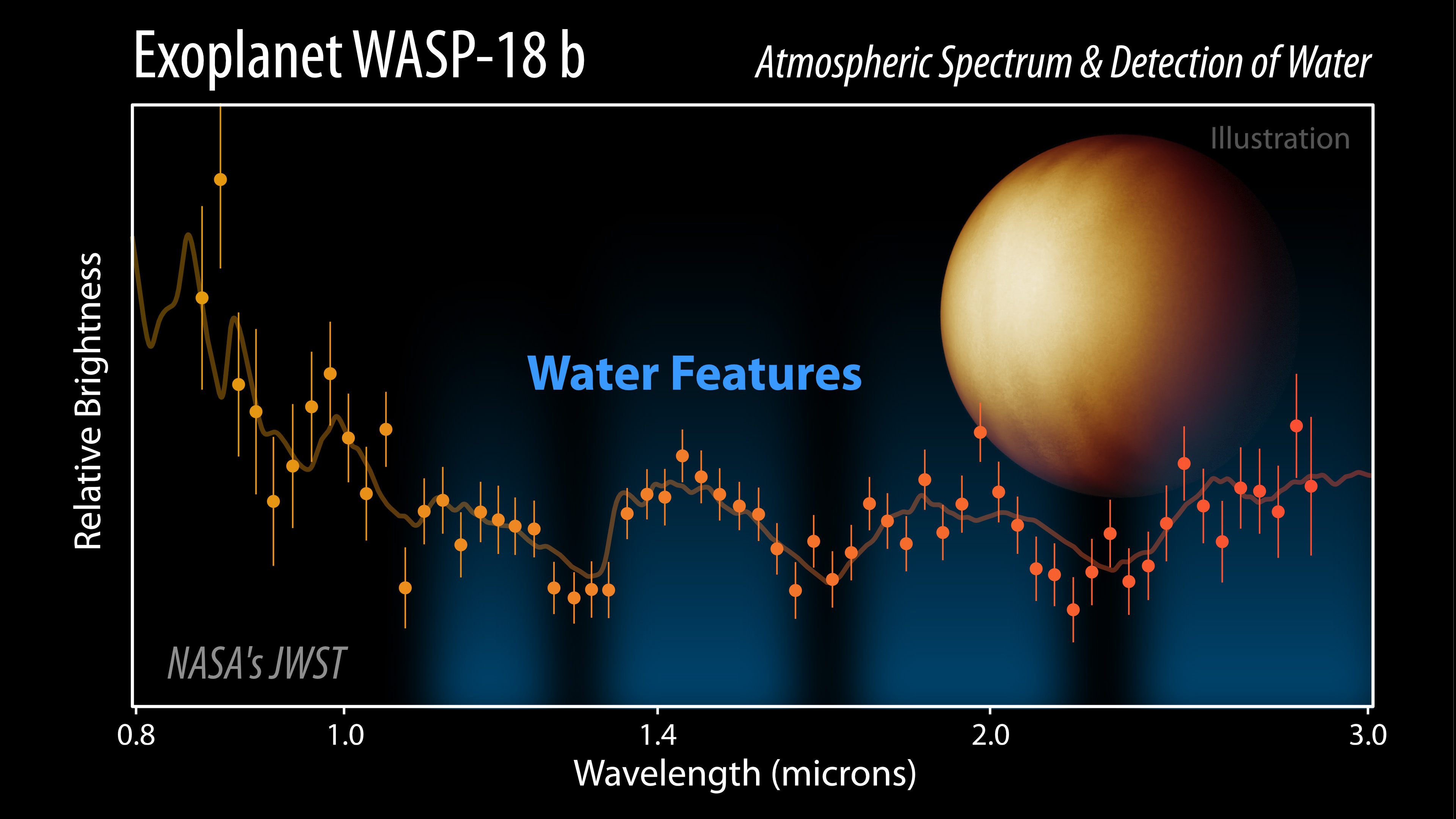Astronomers have known for a while that WASP-18b is a weird planet. A world with an upper atmosphere dominated by carbon monoxide is not your run-of-the-mill exoplanet. New observations by JWST reveal even more intriguing insights into this ultra-hot Jupiter.
First of all, the research team found evidence of water vapor. An important discovery. WASP-18b has a temperature of up to 2,700°C (5,000°F). At that temperature, water is not only a gas, but a lot of water molecules are split apart. So seeing any is a testament to the sensitivity of the observatory.
‘‘Because the water features in this spectrum are so subtle, they were difficult to identify in previous observations. That made it really exciting to finally see water features with these JWST observations!’’ co-author of a paper on the findings, Anjali Piette, from Carnegie Institution for Science, said in a statement.
‘‘Using such measurements, we will be able to detect such molecules for a wide range of planets in the years to come!’’ added lead author Louis-Philippe Coulombe of the University of Montreal.
The light spectrum of WASP-18b clearly shows tell-tale signs of water.
Image credit: Robert Hurt/Caltech/IPAC
It is not just the water that confirms WASP-18b as an absolute weirdo. The team was able to map the temperature across this planet and discovered something peculiar. So this world orbits its star incredibly close. One year is done in just 23 hours. It is so close that it is tidally locked, so one side is constantly in daylight and sweltering, and the other is in perennial night and much cooler. Usually not that cooler as winds carry heat from the day side to the night side.
But this is not the case for WASP-18b. The map shows that from the hottest point facing the star to the terminator (the line between night and day), there is a huge difference. The map shows the gradient of temperature across the whole dayside and it shows a difference of over 1,100°C (2,000°F), suggesting that the heat is not being distributed evenly by the wind going around the planet from east to west.
The current model actually does not have winds there at all. Magnetic effects are actually forcing winds to blow towards the North Pole and South Pole of the Planet. The observatory was also able to measure the detailed temperatures of the atmospheres at different altitudes.
While it’s not the first temperature map of an exoplanet done by JWST, this was done using the secondary eclipse method. The exoplanet is observed as it goes around its star and then as it comes back around again.
“This type of observation allows us to study the thermal infrared radiation that the planet emits on the star-facing side,” coauthor Natalie Batalha, a professor of astronomy and astrophysics at UC Santa Cruz who leads the JWST Transiting Exoplanet Early Release Science Team and helped coordinate the study, said in a different statement.
“The JWST observations have such high precision that we can also measure the minute variations occurring while the planet is slipping behind (and then emerging from) the limb of the star. This allows us to infer spatial information about the planetary atmosphere.”
The paper is published in Nature.
Source Link: JWST Sees Water Vapor In The Atmosphere Of Sizzling Exoplanet
